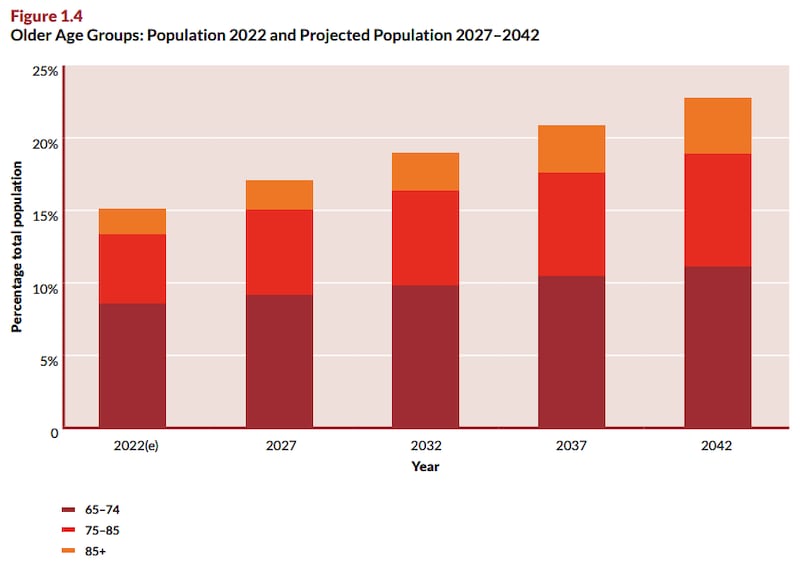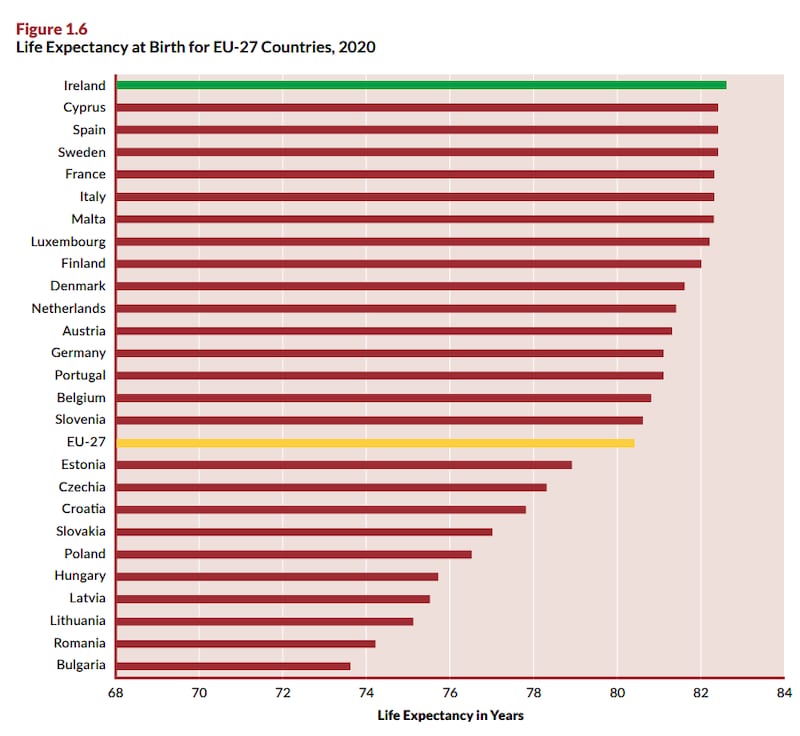Ireland is ageing faster than anywhere else in Europe, placing growing pressure on the health service and posing challenges for planning its future, according to a new report by the Department of Health.
There are five tax-contributing workers for every one person over 65, but in 20 years this ratio will drop to three to one, the Health in Ireland — Key Trends report says.
The over-65 population has grown by 35 per cent over the past decade — more than three times the rate of growth in the overall population and faster than elsewhere in Europe, according to the report.

The number of people in this age group is expected to almost double in the next 20 years, with the greatest proportional increase in the 85+ age group. Those aged 65 and over will grow from one-fifth to more than one-third of the working population over the next 20 years, making it harder to fund health services, the report says. Most hospital beds are occupied by over-65s.
READ MORE

“It is good that people are living longer, but we need to ensure that more of these years, particularly in later life, are spent in good health,” the report observes.
Ireland’s changing demographics will remain “the singular challenge we face when planning our health service into the future”, according to the report.
Meanwhile, births are down by one-fifth, a fall that would have been even greater but for a 4.4 per cent uptick in 2021, the first rise in a decade. Because fertility continues to drop elsewhere, we still have the sixth-highest rate in Europe.
[ State sees biggest rise in population since 2008 amid near record migrationOpens in new window ]
[ Ageing Ireland: ‘I don’t want to go to a residential home... The idea abhors me’Opens in new window ]
Outpatient attendances
The report paints a picture of a health service under constant pressure, with little change in long waiting lists over the past decade. There were 1.5 million attendances to hospital emergency departments in 2021, an increase of 13 per cent on the previous year, and 3.2 million outpatient attendances up 8 per cent.
While more of us than ever are going to hospital, Irish people have the highest self-perceived health status in the EU — 82 per cent of people rate their health as good or very good.
The figures show the ways in which the health service has expanded over the last decade — almost 50 per cent more doctors and 20 per cent more nurses. Over the decade, an additional 1,000 acute beds were opened, an increase roughly in line with the growth in population.
However, the biggest increase has been in spending. Between 2012 and 2021, expenditure on health grew 69.5 per cent.

Falling birth rates and ageing populations: what will this mean for the world?
[ Governments face fiscal time bomb as populations age, OECD warnsOpens in new window ]
Ireland now has the fourth highest spend on health internationally, adjusted for gross national income, after the US, Canada and Germany (and level with France). Ireland ranks seventh in the Organisation for Economic Co-operation and Development for spending in the public health system alone.
Ireland now has the highest life expectancy at birth in Europe, with a two-year increase recorded over the last decade. Much of this has been achieved through fewer deaths from heart attacks, stroke and cancer. The gap in life expectancy for women and men has fallen to 3.6 years.

However, life expectancy dropped in 2020, most likely due to the Covid-19 pandemic.
The rate of death from suicide fell by one-third during the decade, while tobacco and alcohol consumption also fell during the period.
“Overall, there are more people in Ireland and we are living longer lives than before. These trends are set to continue into the coming decades,” the report concludes.












